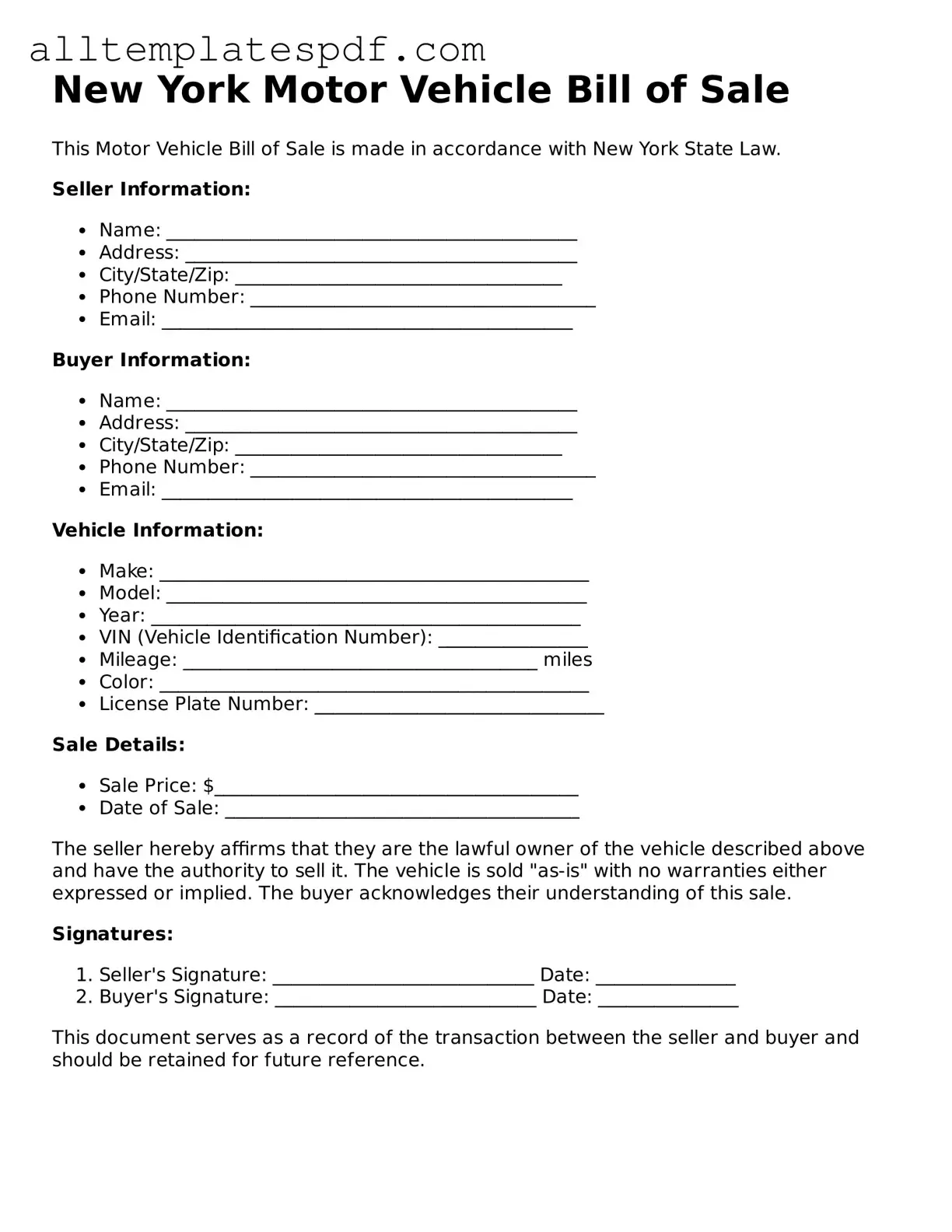Filling out the New York Motor Vehicle Bill of Sale form can seem straightforward, but many people make common mistakes that can lead to complications later. One frequent error is not including all required information. This form needs specific details about the vehicle, such as the make, model, year, and Vehicle Identification Number (VIN). Omitting any of this information can cause issues during the registration process.
Another mistake involves incorrect spelling or inaccuracies in the names of the buyer and seller. It's crucial to ensure that the names match the identification documents exactly. Even a small typo can create confusion and might delay the transfer of ownership.
People often forget to date the form. The date is essential as it marks when the sale took place. Without it, proving the timeline of the transaction can become problematic, especially if any disputes arise later on.
Some individuals neglect to have both parties sign the document. A Bill of Sale is not valid unless both the buyer and seller have signed it. This signature confirms that both parties agree to the terms of the sale, making it an essential step in the process.
Another common oversight is not providing a purchase price. This amount must be clearly stated on the form. Leaving it blank can lead to misunderstandings and may even affect tax calculations when registering the vehicle.
Many people also fail to check the odometer reading. The form requires the seller to disclose the vehicle's mileage at the time of sale. Not providing this information can raise suspicions and lead to potential legal issues regarding the vehicle's condition.
Some individuals may not keep a copy of the completed Bill of Sale. It is important to retain a copy for personal records. This document serves as proof of the transaction and can be useful if any questions or issues arise in the future.
Lastly, people sometimes overlook the importance of verifying the buyer's identification. It’s essential to ensure that the buyer is who they claim to be. This step protects both parties and helps prevent fraud in the transaction.
